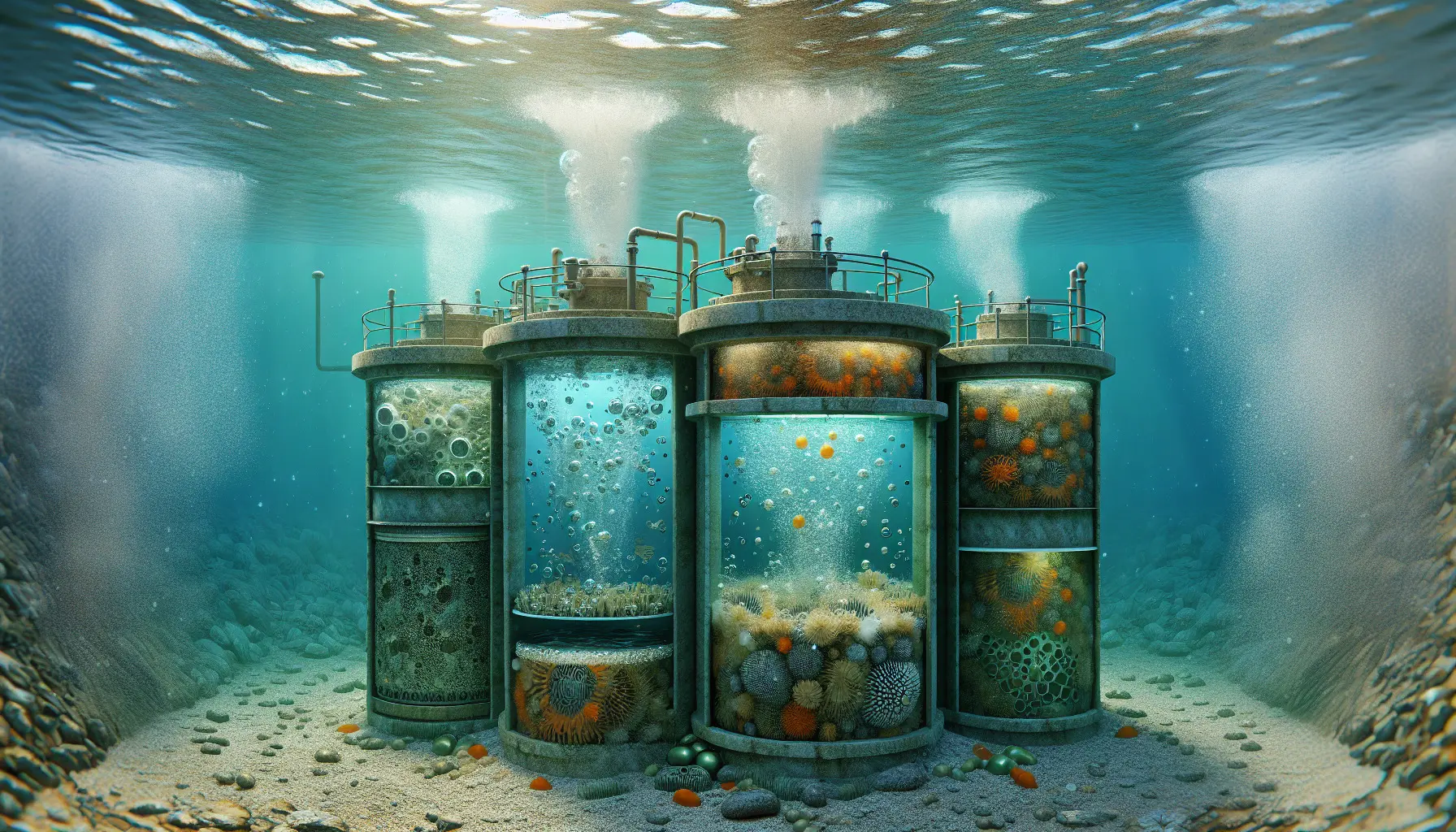Septic tank systems are essential for wastewater management in properties without access to centralized sewer systems. These on-site systems treat and dispose of wastewater through a combination of components, primarily the septic tank and drain field or leach field. The septic tank separates solid waste from liquid, allowing solids to settle while liquid flows into the drain field for further treatment and disposal.
Get one year Free Listings!
Subscribe to our newsletter and get 1 year listings + XML imports for free and enjoy a 100% discount on all listing placement packages, no strings attached!

Various types of septic tank systems exist, each with distinct designs and treatment methods. This article will examine conventional septic tanks, chamber septic tanks, aerobic treatment unit (ATU) septic tanks, mound septic tanks, low-pressure dosing septic tanks, and alternative septic tank systems.
Key Takeaways
- Septic tank systems are an essential part of rural and suburban wastewater management.
- Conventional septic tank systems are the most common type and consist of a septic tank and a drain field.
- Chamber septic tank systems use plastic chambers to replace traditional gravel in the drain field.
- Aerobic treatment unit (ATU) septic tank systems use oxygen to break down waste more efficiently.
- Mound septic tank systems are used in areas with high water tables and consist of an elevated drain field.
Conventional Septic Tank Systems
Conventional septic tank systems are the most common type of septic system and have been used for many years. These systems consist of a single concrete or plastic tank buried underground, which is divided into two chambers. The wastewater from the property flows into the first chamber of the septic tank, where the solid waste settles at the bottom and the liquid waste floats to the top.
The liquid waste then flows into the second chamber, where further treatment occurs before it is discharged into the drain field. The drain field is made up of a series of perforated pipes buried in gravel trenches, which allow the liquid waste to be absorbed into the soil and naturally filtered. Conventional septic tank systems are relatively simple in design and are effective at treating wastewater, but they do require regular maintenance and pumping to remove the accumulated solid waste from the tank.
Conventional septic tank systems are the most widely used type of septic system due to their simplicity and effectiveness in treating wastewater. These systems are typically made of durable materials such as concrete or plastic and are designed to withstand the pressures and demands of daily use. The two-chamber design of conventional septic tanks allows for the separation of solid and liquid waste, ensuring that only treated effluent is discharged into the drain field.
The drain field itself is an essential component of conventional septic tank systems, as it provides the final stage of treatment by allowing the liquid waste to be absorbed into the soil and naturally filtered. While conventional septic tank systems are effective at treating wastewater, they do require regular maintenance and pumping to remove accumulated solids from the tank and prevent clogging of the drain field. Overall, conventional septic tank systems are a reliable and cost-effective option for properties without access to a centralized sewer system.
Chamber Septic Tank Systems

Chamber septic tank systems are a variation of conventional septic tank systems that use plastic chambers instead of traditional perforated pipes in the drain field. These chambers are lightweight and easy to install, making them a popular choice for properties with limited space or difficult soil conditions. The chambers are placed in shallow trenches in the soil and are covered with a layer of soil or gravel to protect them from damage.
Wastewater from the property flows into the chambers, where it is treated and filtered before being absorbed into the surrounding soil. Chamber septic tank systems are designed to provide a larger surface area for wastewater treatment compared to traditional drain fields, allowing for more efficient treatment and disposal of liquid waste. Chamber septic tank systems offer several advantages over conventional septic tank systems, including easier installation and maintenance, as well as improved treatment and disposal of wastewater.
The plastic chambers used in these systems are lightweight and easy to handle, making them ideal for properties with limited space or difficult soil conditions. Additionally, the larger surface area provided by the chambers allows for more efficient treatment and filtration of liquid waste, resulting in cleaner effluent being discharged into the surrounding soil. Chamber septic tank systems are also less prone to clogging compared to traditional drain fields, as the chambers provide better distribution of wastewater throughout the system.
Overall, chamber septic tank systems are a practical and effective option for properties in need of a reliable on-site wastewater treatment solution.
Aerobic Treatment Unit (ATU) Septic Tank Systems

Aerobic Treatment Unit (ATU) septic tank systems are an advanced type of septic system that use oxygen to break down and treat wastewater more effectively than conventional systems. These systems consist of a pre-treatment tank where solid waste is separated from the liquid waste, followed by an aeration chamber where oxygen is introduced to promote the growth of aerobic bacteria that break down organic matter. The treated effluent then flows into a disinfection chamber where it is further treated before being discharged into the drain field.
ATU septic tank systems are designed to provide superior treatment of wastewater compared to conventional systems, resulting in cleaner effluent being released into the environment. ATU septic tank systems offer several advantages over conventional septic systems, including superior treatment of wastewater and reduced environmental impact. The use of oxygen in these systems promotes the growth of aerobic bacteria that break down organic matter more effectively than anaerobic bacteria used in conventional systems.
This results in cleaner effluent being discharged into the environment, reducing the potential for contamination of groundwater and surface water sources. ATU septic tank systems also require less space than conventional systems, making them a practical option for properties with limited space or difficult soil conditions. Additionally, these systems are designed to be more energy-efficient and require less maintenance compared to conventional septic systems, making them a cost-effective and environmentally friendly option for on-site wastewater treatment.
Mound Septic Tank Systems
Mound septic tank systems are designed for properties with high water tables or shallow soil depth, where traditional drain fields may not be feasible. These systems consist of a raised mound of sand or gravel that is built above ground level and covered with a layer of soil and vegetation. Wastewater from the property flows into a pre-treatment tank where solid waste is separated from the liquid waste before being pumped to the mound for further treatment and disposal.
Mound septic tank systems are designed to provide effective treatment of wastewater in areas where traditional drain fields are not practical, ensuring that the treated effluent is safely absorbed into the surrounding soil without impacting groundwater sources. Mound septic tank systems offer several advantages over traditional drain fields in areas with high water tables or shallow soil depth. The raised mound design allows for effective treatment and disposal of wastewater without the need for extensive excavation or modification of the existing soil.
This makes mound septic tank systems a practical option for properties where traditional drain fields may not be feasible due to site constraints or environmental considerations. Additionally, these systems are designed to provide superior treatment of wastewater compared to conventional septic systems, resulting in cleaner effluent being discharged into the environment. Mound septic tank systems also offer flexibility in design and can be customized to meet the specific needs of each property, making them a versatile option for on-site wastewater treatment.
Low-Pressure Dosing Septic Tank Systems
Low-pressure dosing septic tank systems are designed to provide more efficient distribution of wastewater throughout the drain field compared to traditional gravity-fed systems. These systems use a pump to evenly distribute small doses of wastewater into the drain field over a longer period, allowing for better absorption and filtration of liquid waste into the surrounding soil. This results in more effective treatment of wastewater and reduces the potential for clogging or saturation of the drain field.
Low-pressure dosing septic tank systems are ideal for properties with difficult soil conditions or limited space, as they provide better control over the distribution of wastewater and ensure that it is effectively treated before being absorbed into the environment. Low-pressure dosing septic tank systems offer several advantages over traditional gravity-fed systems, including more efficient distribution of wastewater and reduced potential for clogging or saturation of the drain field. The use of a pump in these systems allows for better control over the distribution of wastewater, ensuring that it is evenly distributed throughout the drain field for more effective treatment and disposal.
This results in cleaner effluent being discharged into the environment, reducing the potential for contamination of groundwater sources. Low-pressure dosing septic tank systems also require less space than traditional gravity-fed systems, making them a practical option for properties with limited space or difficult soil conditions. Overall, these systems provide a reliable and efficient solution for on-site wastewater treatment, ensuring that liquid waste is safely managed without impacting the surrounding environment.
Alternative Septic Tank Systems
In addition to conventional, chamber, ATU, mound, and low-pressure dosing septic tank systems, there are several alternative options available for on-site wastewater treatment. These alternative systems include sand filter septic tanks, constructed wetlands, recirculating media filters, and drip irrigation systems, each offering unique advantages for properties with specific site constraints or environmental considerations. Sand filter septic tanks use layers of sand and gravel to filter and treat wastewater before it is discharged into the environment, providing effective treatment in areas with limited space or difficult soil conditions.
Constructed wetlands mimic natural wetland ecosystems to treat wastewater through biological processes, making them an environmentally friendly option for on-site wastewater treatment. Recirculating media filters use layers of media such as peat moss or textile filters to treat wastewater before it is discharged into the environment, providing superior treatment compared to conventional septic systems. Drip irrigation systems distribute small doses of treated effluent through a network of pipes directly into the soil, allowing for efficient absorption and filtration without impacting groundwater sources.
These alternative septic tank systems offer practical solutions for properties with specific site constraints or environmental considerations, ensuring that wastewater is effectively treated and managed without causing harm to the surrounding environment. In conclusion, there are several types of septic tank systems available for on-site wastewater treatment, each offering unique advantages for properties with specific site constraints or environmental considerations. Conventional septic tank systems provide reliable treatment and disposal of wastewater in a cost-effective manner, while chamber septic tank systems offer easier installation and maintenance with improved treatment efficiency.
ATU septic tank systems provide superior treatment compared to conventional systems with reduced environmental impact, while mound septic tank systems offer effective treatment in areas with high water tables or shallow soil depth. Low-pressure dosing septic tank systems provide more efficient distribution of wastewater with reduced potential for clogging or saturation of the drain field, while alternative septic tank systems offer practical solutions for properties with specific site constraints or environmental considerations. Overall, each type of septic tank system has its own unique advantages and can be tailored to meet the specific needs of each property for effective on-site wastewater treatment and management.






Join The Discussion